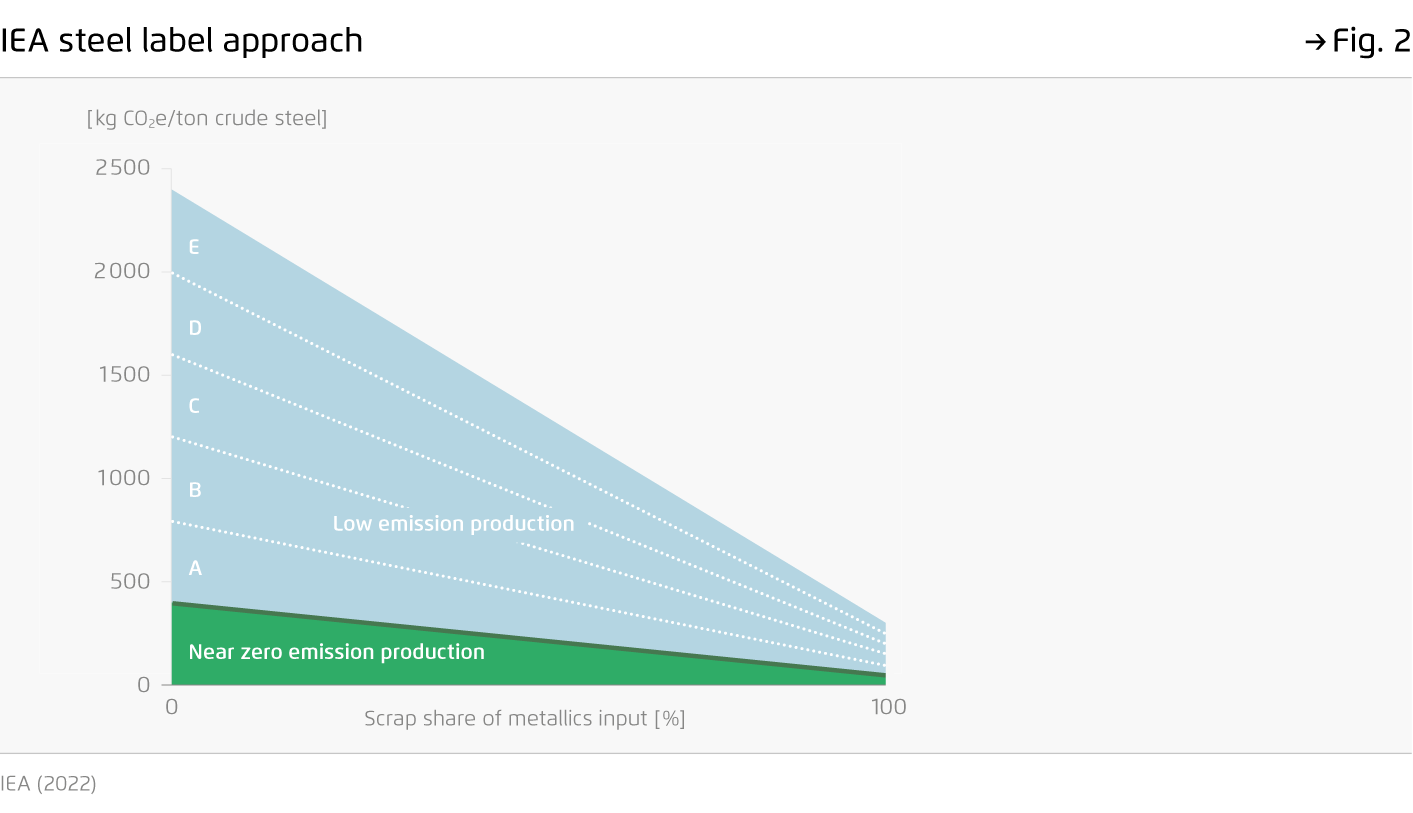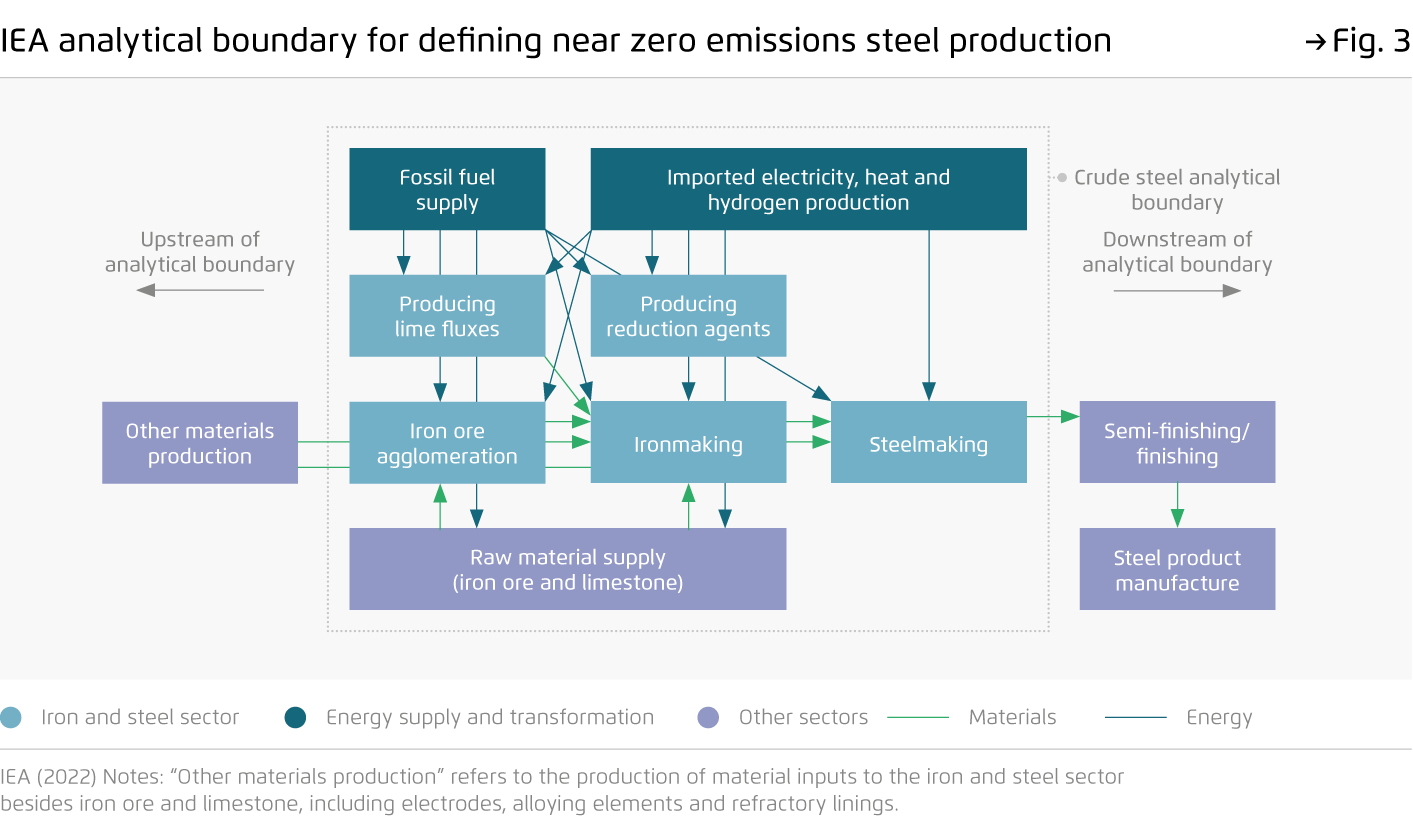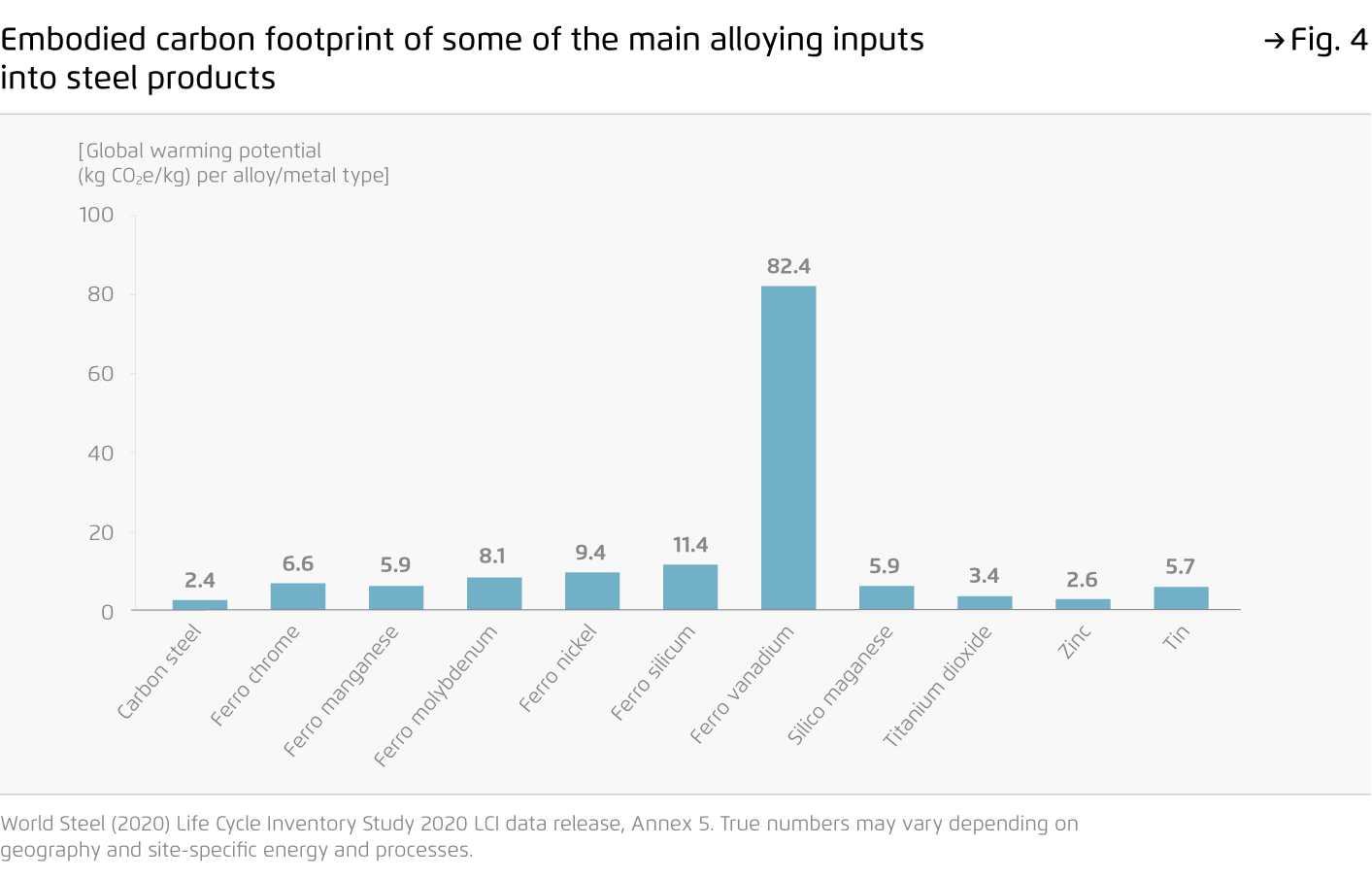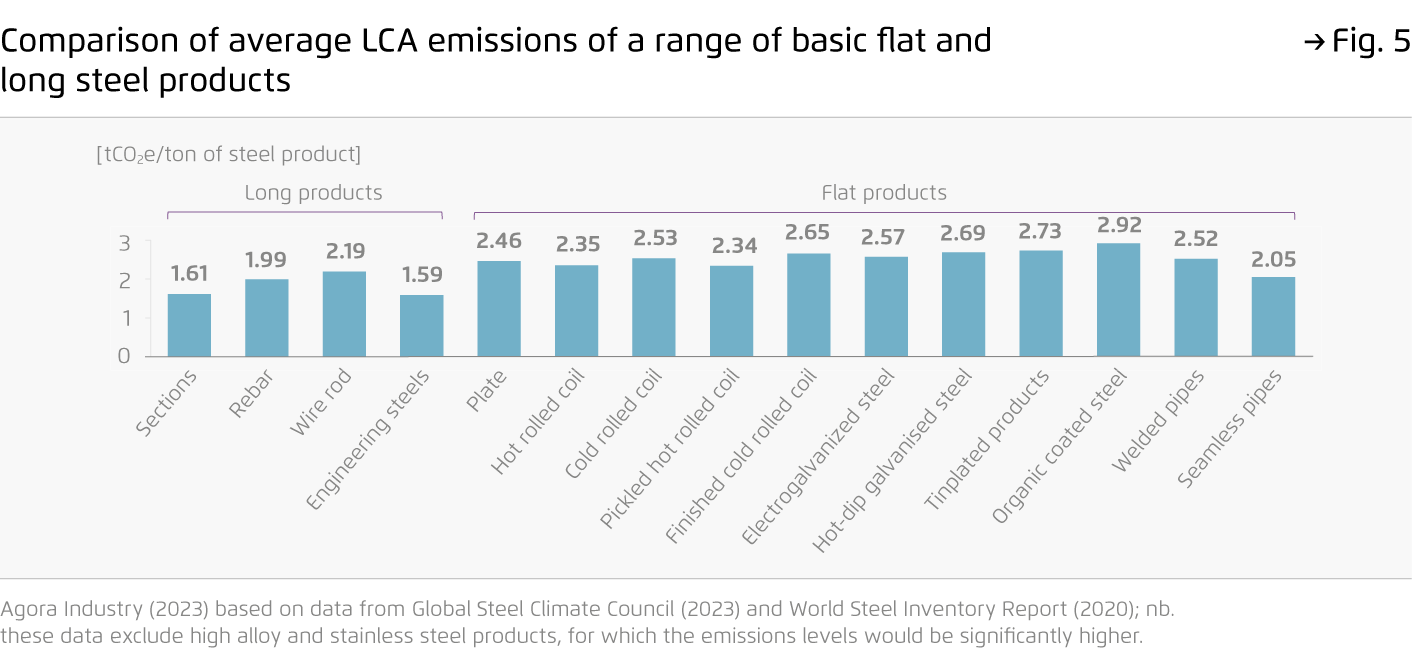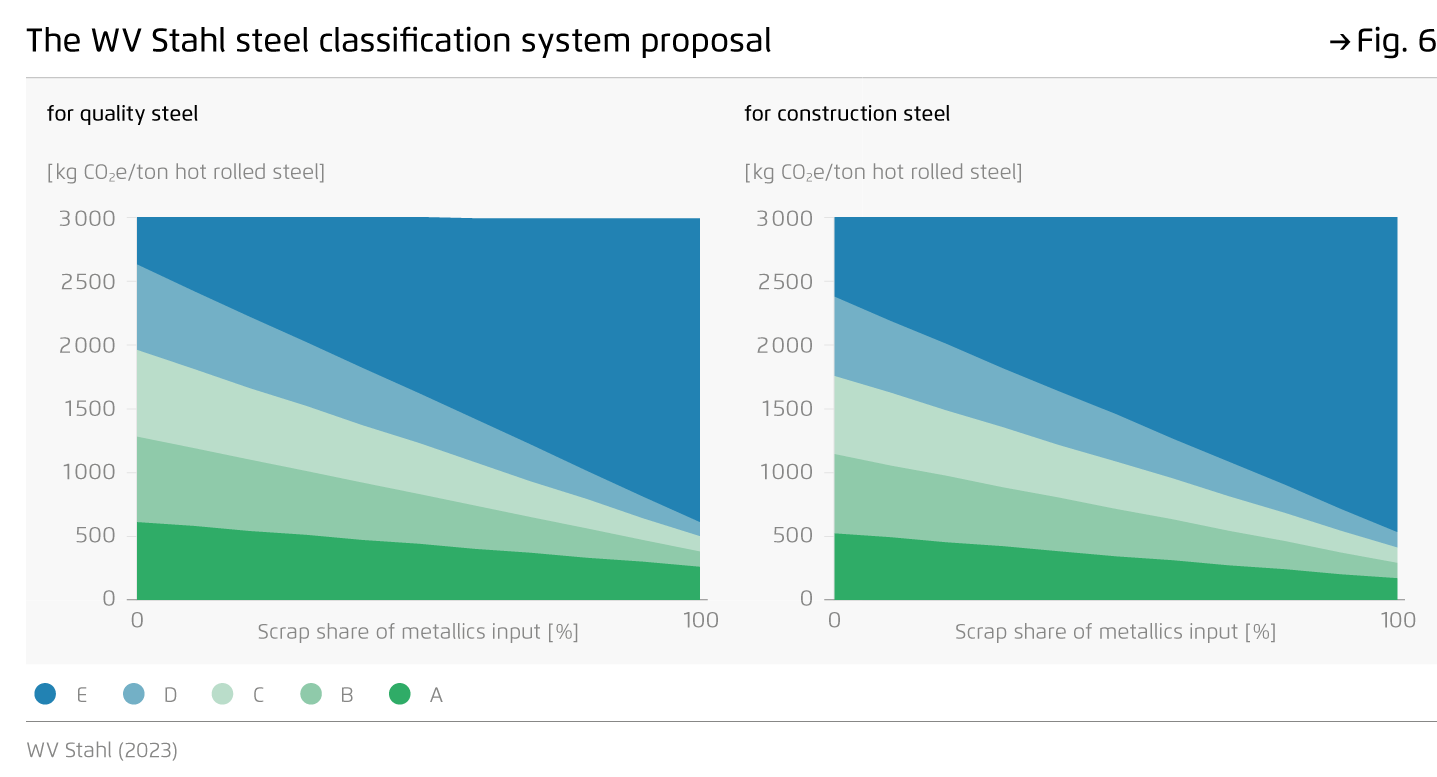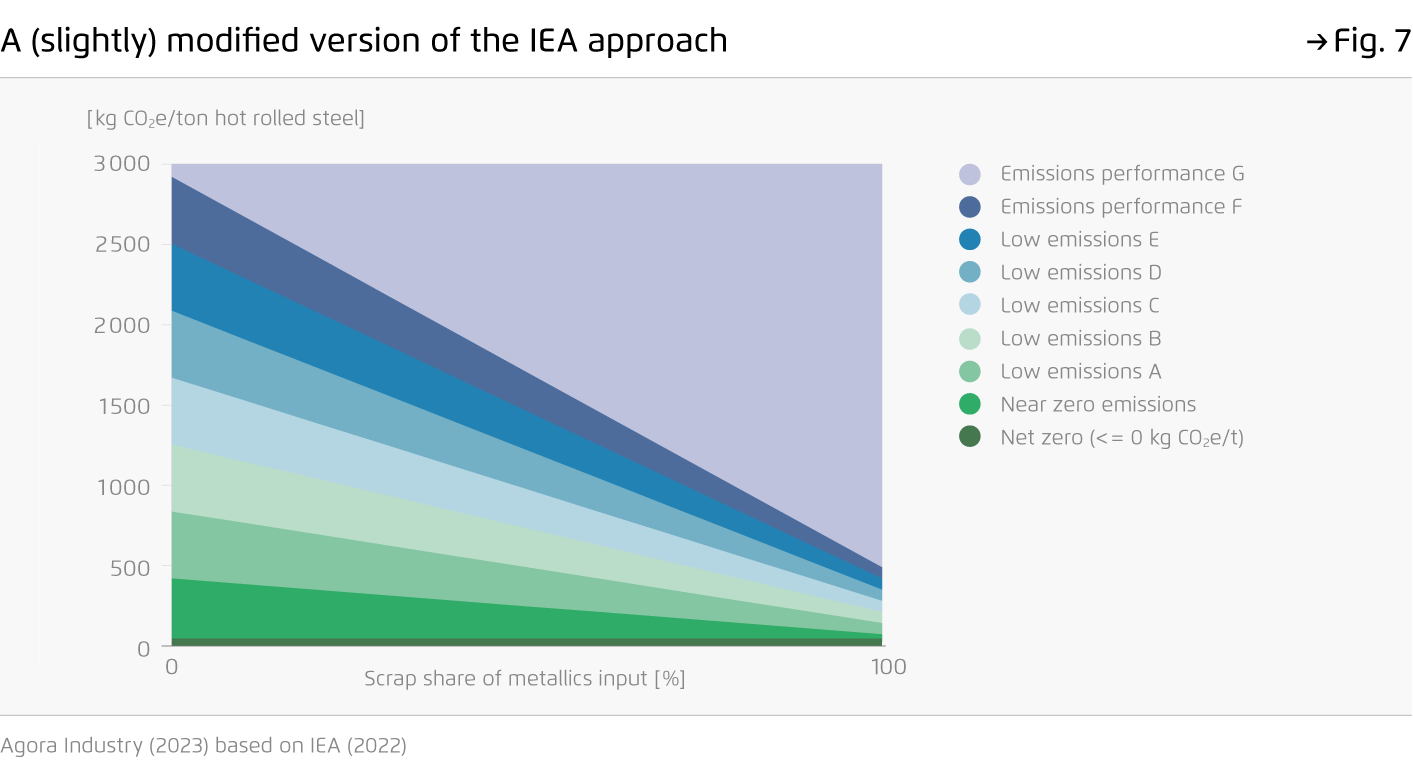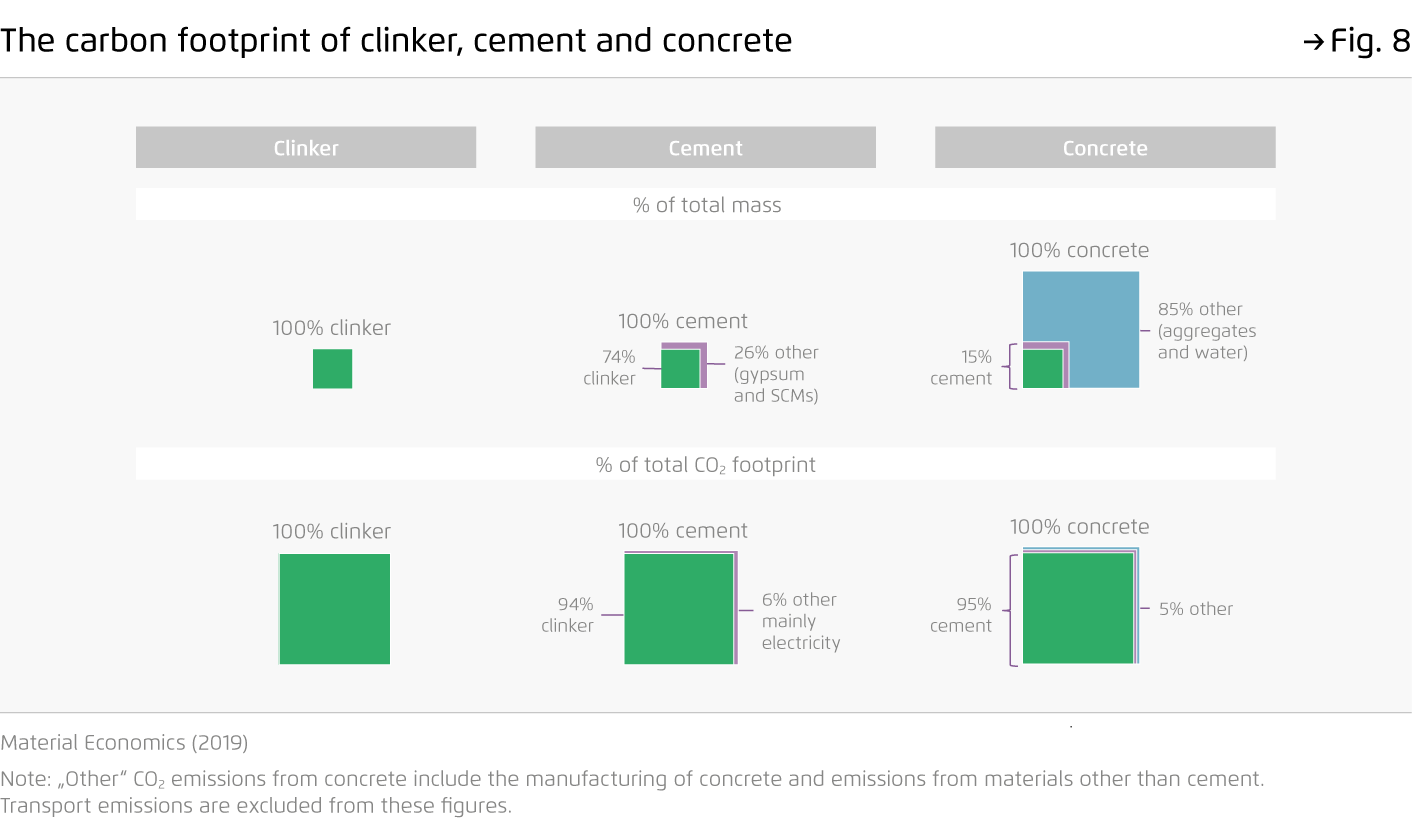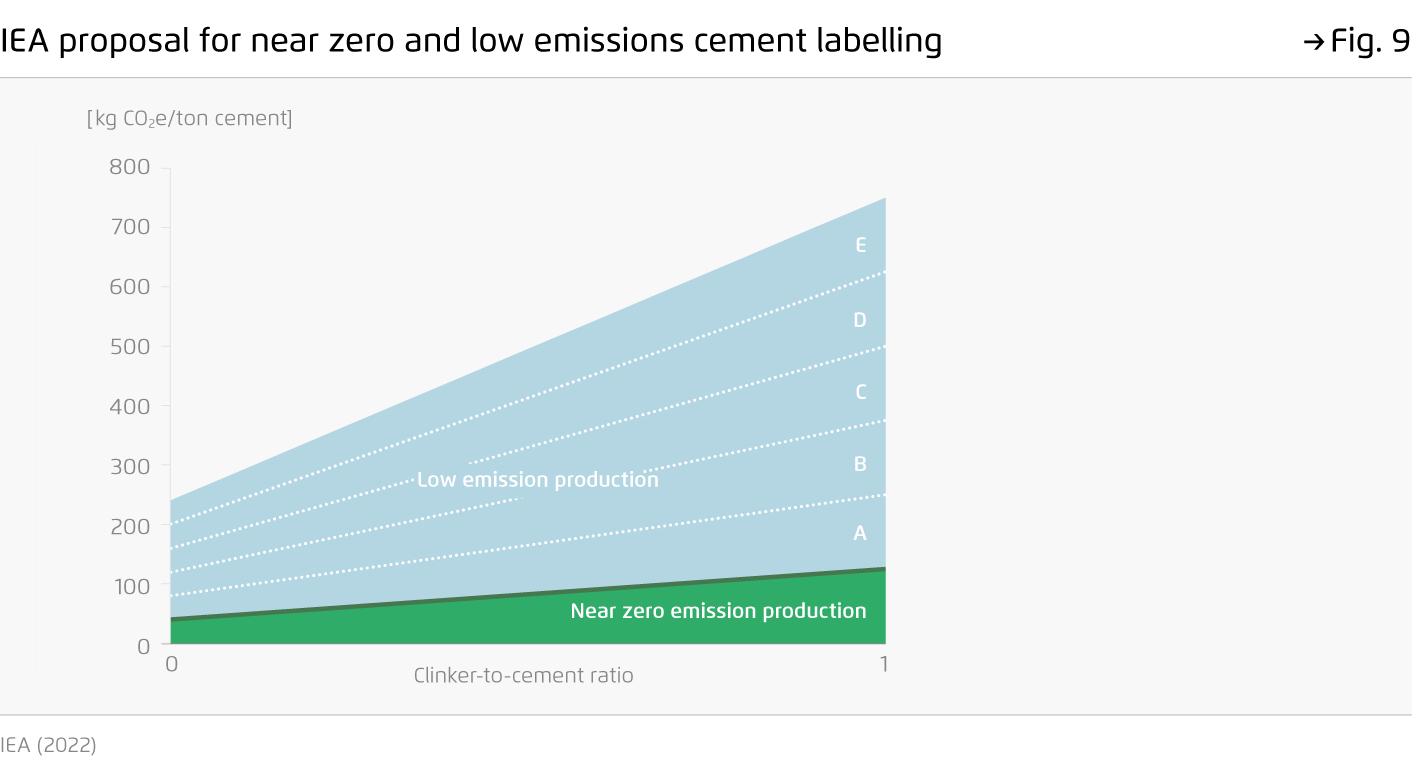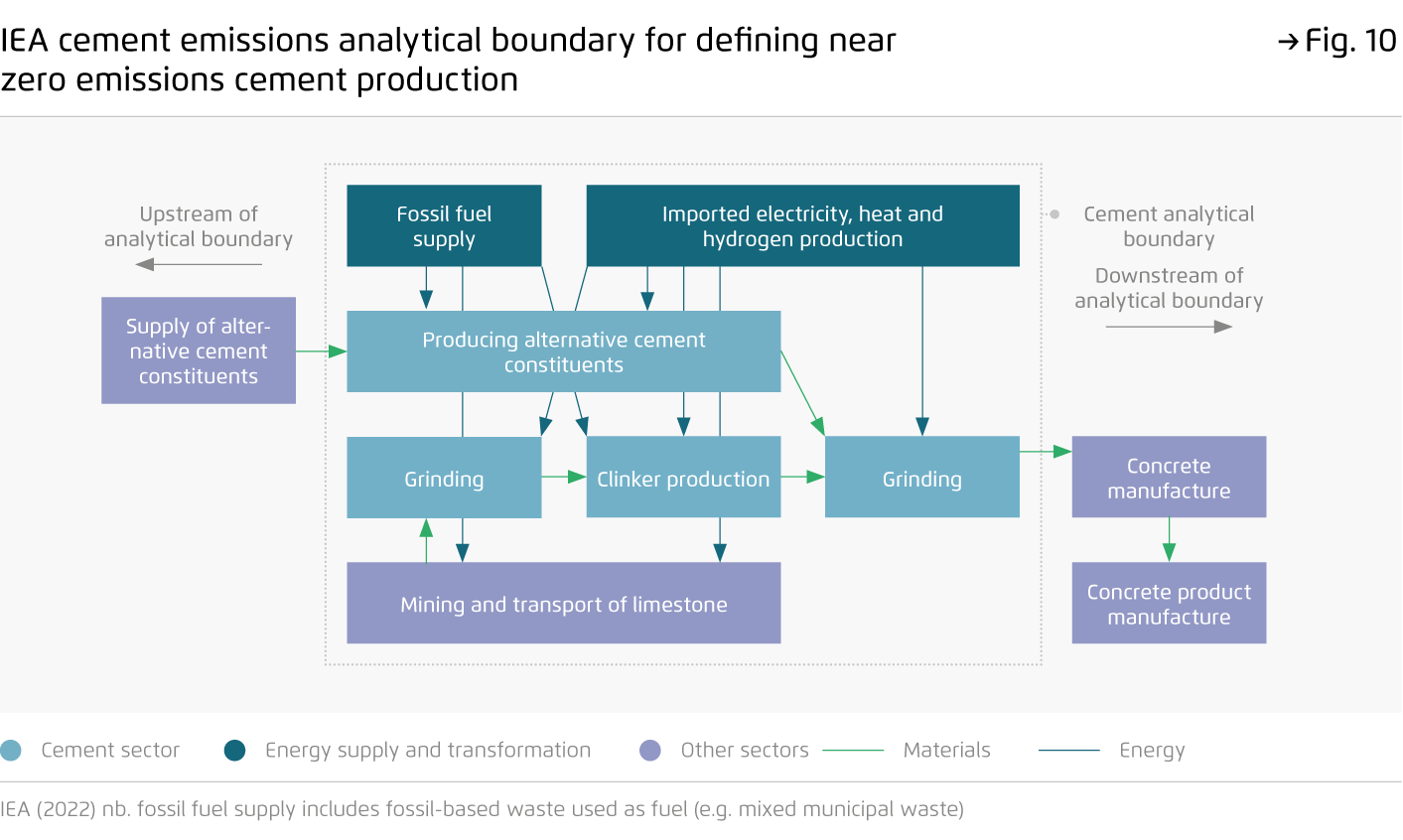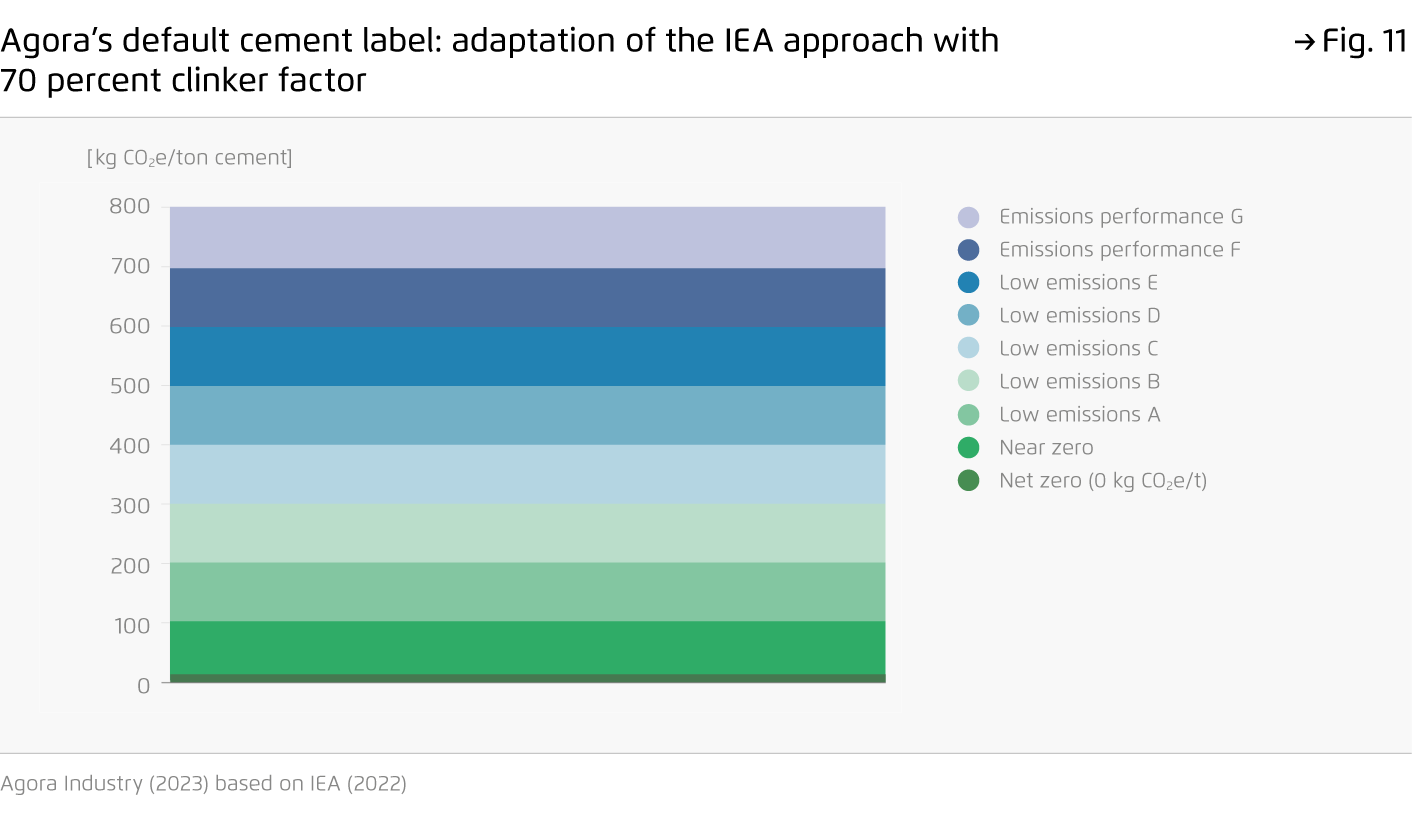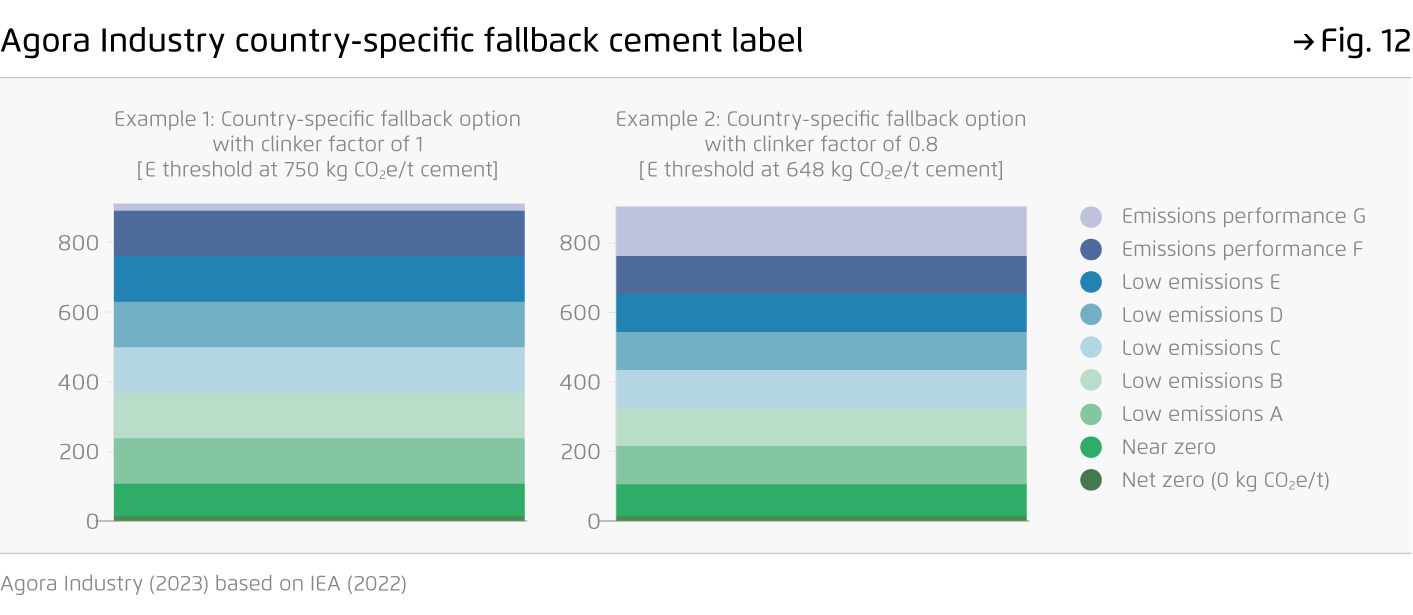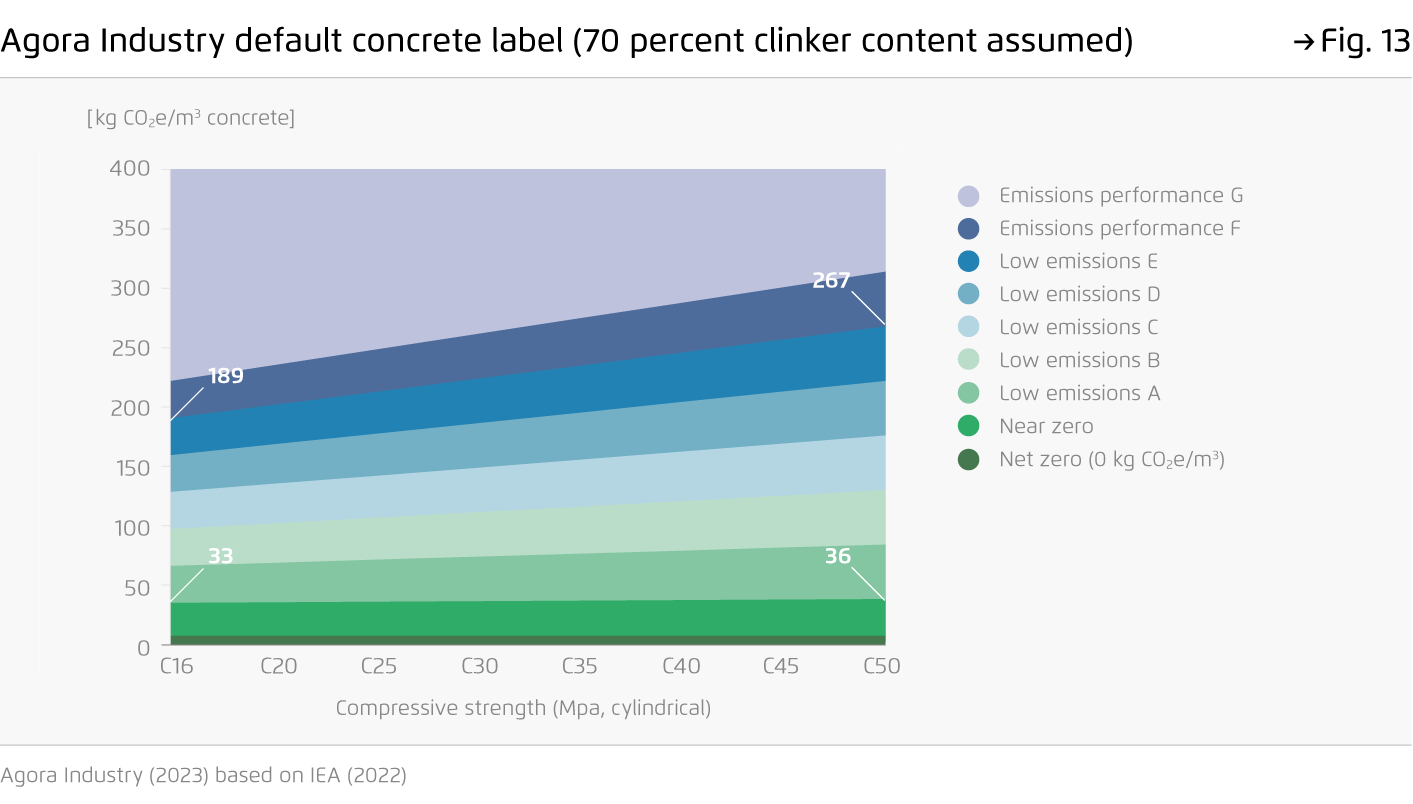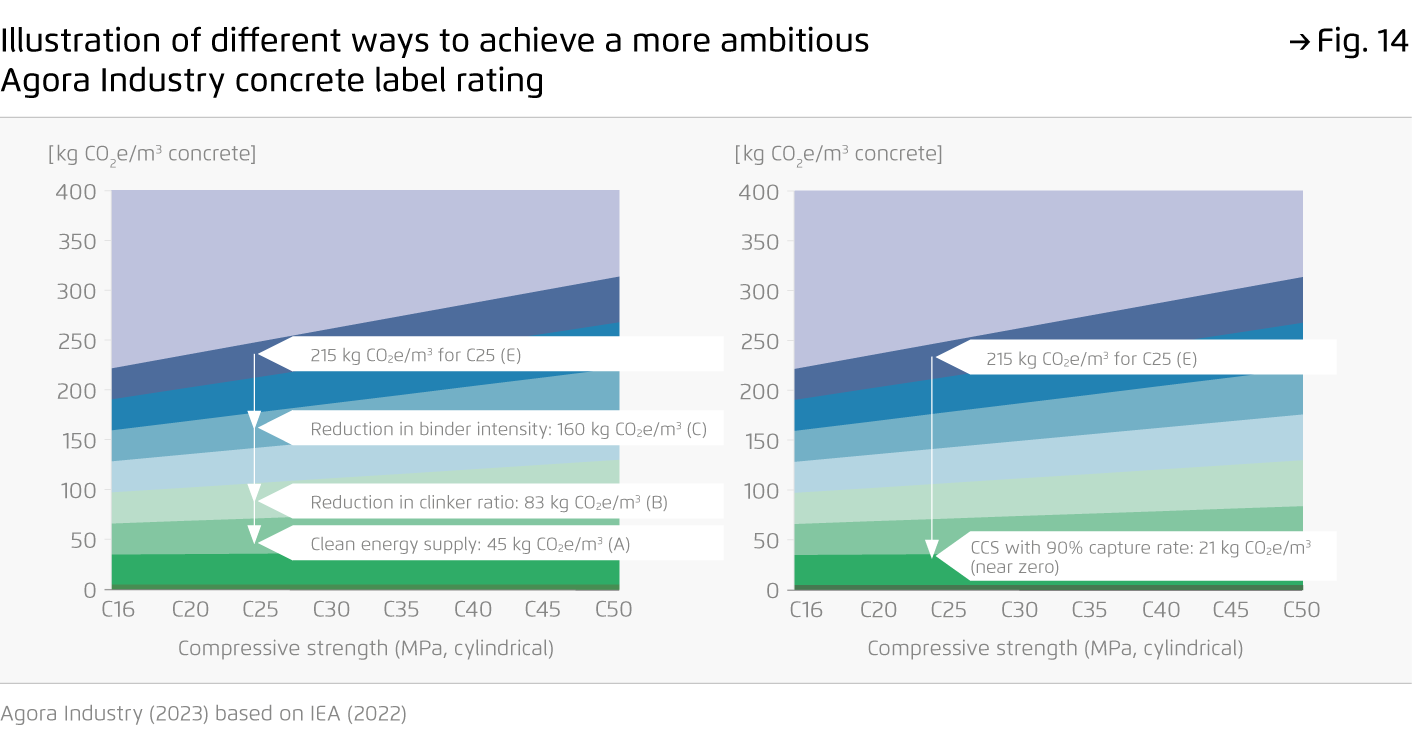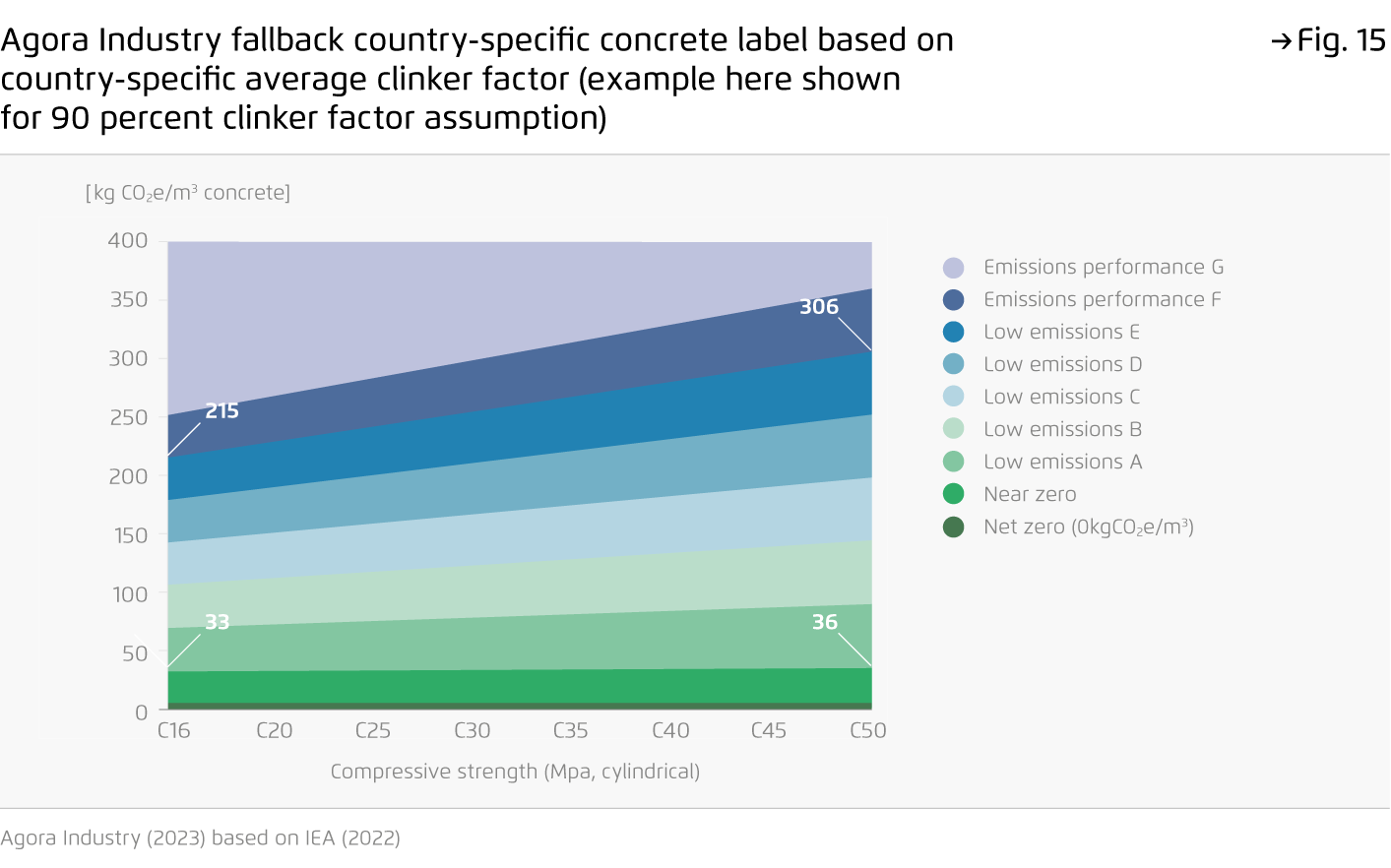-
Standardised emissions performance labels are an essential and urgently needed tool to kick-start demand for climate-friendly basic materials such as steel and concrete.
Labels can provide much-needed transparency and confidence in the environmental claims of basic-materials producers. A standardised labelling methodology is urgently needed to help support the business case for investments into key climate-friendly technologies in coming years.
-
Labels should be nested within a broader mix of policies targeting a market creation for low-emissions basic materials.
Other demand-side related policies such as public procurement can use the definitions of low-emissions and near-zero basic materials provided in labels as a basis to formulate their own specific goals. Labels may also be a stepping stone towards CO2 product requirements on certain basic materials, which could help align regulatory ambitions across countries.
-
To support the industrial transition, labels must meet certain basic criteria.
They should differentiate the highest levels of ambition but also incentivise incremental steps along the way to climate neutrality. Labels should focus on certain production stages of basic materials, where the vast majority of emissions occur and that require deep transformation for sectoral decarbonisation. They must also adjust for factors that could significantly undermine incentives for transformation, such as the share of steel scrap in crude steel, or the strength of concrete.
-
Labels for traded basic materials should ideally be developed at the international level and reflect the different starting points of low-, middle- and high-income countries.
If this cannot be achieved in due time, different national or regional – for example at the European Union (EU) level – pilot approaches need to be coordinated effectively. Venues such as the European Union, the OECD climate club, the IEA, the GASSA, or Global Arrangement on Sustainable Steel and Aluminium, and similar standardisation bodies and initiatives of the G20 Clean Energy Ministerial can help to promote this alignment.
Labels for climate-friendly basic materials
A guide to the debate

Preface
Steel, concrete and cement are currently responsible for one-sixth of global greenhouse gas emissions due to the emissions intensity of their production processes and widespread use.
These sectors could make a tremendous contribution to bringing about a climate-neutral world if they transform their production processes. Climate-friendly ways of making these materials already exist but need substantial scaling up in the coming years.
Coherent CO2 pricing and the hedging of incremental costs through carbon contracts for difference can spur an initial development of climate-neutral steel, concrete and cement production on the supply side.
Simultaneously, a market for green materials needs to be created to drive demand. To achieve this, the development of standardised labelling for these materials providing information on their environmental properties and setting benchmarks for further emissions reductions is essential.
Key findings
Bibliographical data
Downloads
-
pdf 1 MB
Labels for climate-friendly basic materials
A guide to the debate
All figures in this publication
The ResponsibleSteel standard
Figure 1 from Labels for climate-friendly basic materials on page 15
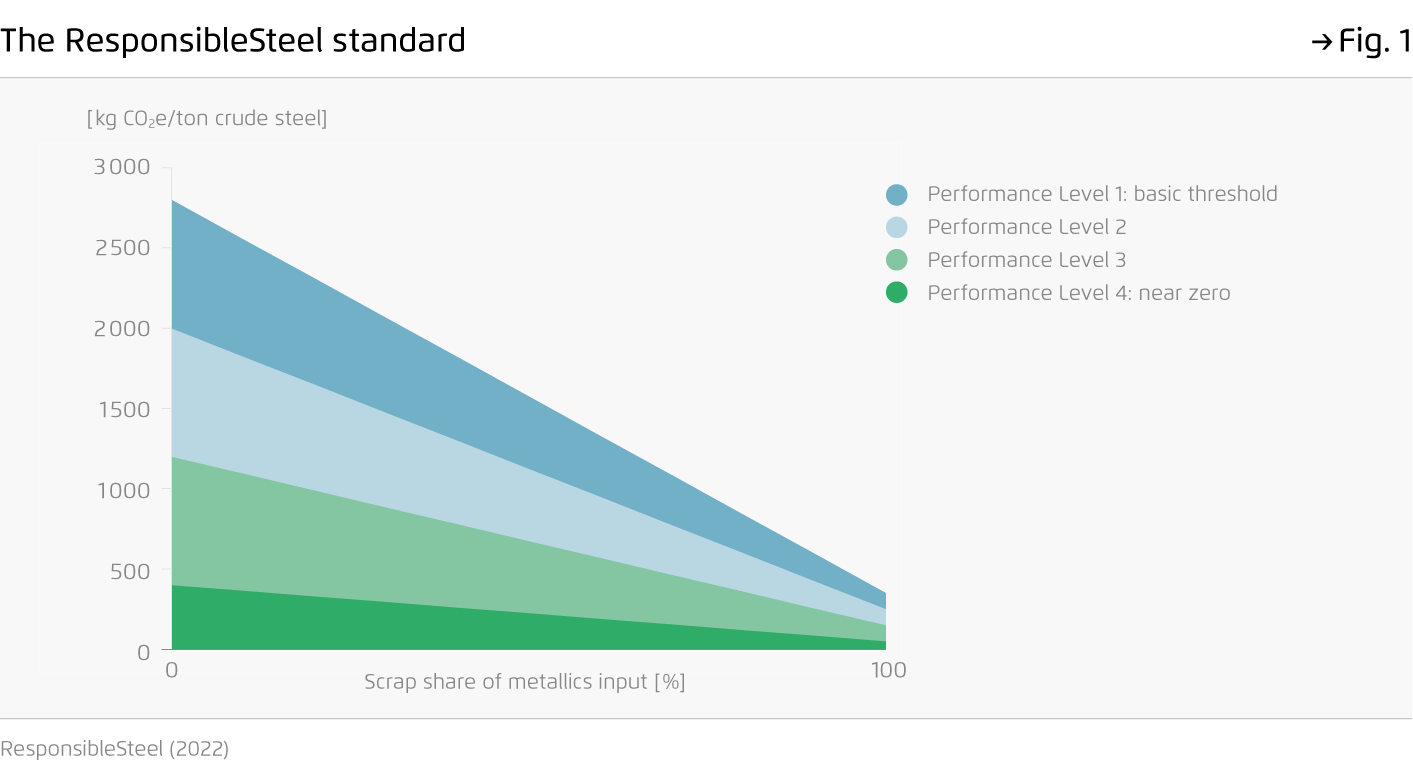
IEA steel label approach
Figure 2 from Labels for climate-friendly basic materials on page 17
